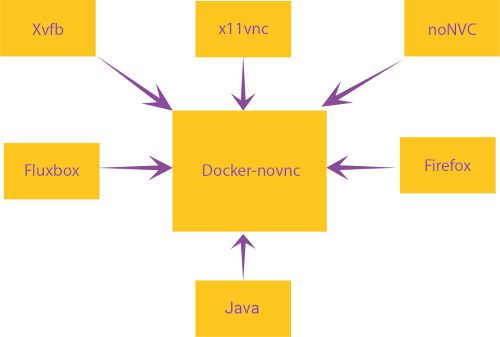the key to effective recruiting and a successful team
Picture this: You've just finished an interview with a candidate who seems fantastic. Confident, charismatic, with a flawless resume. You're ready to sign a contract with them. But three months later, this “perfect” employee turns out to be a complete disaster. Sound familiar? You're not alone.
Research shows that up to 80% of hiring decisions based on subjective assessment are wrong in the long run.
Let's figure out why this happens and how to avoid costly hiring mistakes.
The Pitfalls of Subjective Evaluation: Why We Make Mistakes
The human brain is an amazing tool, but it is not always reliable. When it comes to evaluating candidates, our minds can play tricks on us. Let's look at the main pitfalls of subjectivity that can lead to bad hiring decisions.
The Halo Effect: When First Impressions Are Deceiving
Picture this: A candidate walks into the room, confidently shakes your hand, and starts the conversation with a witty joke. Impressive, right? That's the halo effect.
Our brains tend to project one strong quality onto a person's entire personality. A charismatic candidate may seem more competent to us, even if their skills don't match the job requirements.
How to avoid: Make a clear list of required competencies and evaluate the candidate on each point separately. Don’t let the overall impression overshadow the important details.

Confirmation bias: looking for what we want to find
When we like a candidate, we begin to look for confirmation of our initial assessment. We may interpret ambiguous answers in their favor and ignore warning signs.
How to avoid: Actively seek out information that may challenge your first impression. Ask challenging questions and look for inconsistencies in the candidate's answers.
Stereotypical Thinking: Blocking the Path to Talent
“Young specialist? Probably inexperienced.” “A candidate over 50? Unlikely to master new technologies.” These stereotypes can deprive you of a talented employee.
How to avoid: Be aware of your biases and actively work to overcome them. Evaluate candidates solely on their skills and experience, not on their age, gender, or other demographic characteristics.
Recency Effect: The Last Impression Matters Most
If you conduct several interviews in a row, the last candidate may be the one you remember best, even if he or she is not the best fit.
How to avoid: Take detailed notes after each interview and compare candidates based on these notes rather than relying solely on memory.
Projection: attributing one's qualities to others
We tend to like people who are similar to us. This can lead us to rate a candidate higher if they share our interests or have similar experiences.
How to avoid: Focus on objective evaluation criteria. Involve colleagues with different backgrounds in the hiring process to obtain a diverse assessment.
Contrast effect: “the best of the worst”
After several weak candidates, the average one may seem outstanding. This may lead to hiring the wrong employee.
How to avoid: Evaluate each candidate against pre-established criteria, not against others. Don't be afraid to keep looking if none of the candidates meet your requirements.

Attribution error: misinterpreting behavior
We often attribute a candidate's successes to his or her personal qualities and failures to external circumstances. This can lead to an overestimation of the candidate's potential.
How to avoid: Ask follow-up questions about the candidate's specific contributions to successful projects and how he or she overcame challenges.
The Cost of Mistakes: What a Bad Hire Really Costs
A bad hire is more than just an unfortunate mistake. It’s a financial and operational disaster that can undermine the stability of your business. Let’s look at the real cost of such a mistake:
Direct financial losses:
Recruiting costs: advertising the vacancy, HR specialists’ time, possible payments to recruiting agencies.
Adaptation costs: training, adaptation, workplace equipment.
Salary and compensation during the probationary period.
Severance pay upon dismissal.
According to research, these costs can range from 30% to 150% of an employee's annual salary, depending on the level of the position.

Lost Profit:
Time wasted searching, interviewing and training the wrong candidate.
Unimplemented projects and tasks that could have been completed by the right employee.
Lost clients or orders due to insufficient employee competence.
Decreased team productivity:
Additional burden on colleagues who are forced to compensate for shortcomings.
Stress and demotivation in the team.
Time spent by a manager on micromanagement and fixing mistakes.
Reputational risks:
Damage to employer brand if information about frequent layoffs becomes public.
Loss of customer trust when working with an incompetent employee.
Possible leaks of confidential information due to frequent changes in personnel.
Long term effects:
Slowing company growth due to constant staff turnover.
Reduced innovation potential: New ideas often come from the right people.
Deterioration of corporate culture and atmosphere in the team.
Example: a medium-sized company hired a sales manager with a salary of 100,000 rubles per month. After 3 months, it became clear that the employee was not coping. Result:
Direct costs: 300,000 rubles (salary) + 50,000 rubles (recruiting and training)
Lost profit: minimum 500,000 rubles (potential sales)
Indirect losses: decreased team motivation, wasted manager time
Total losses: more than 850,000 rubles in 3 months.
How to Avoid the Pitfalls of Subjectivity: A Professional Approach to Assessing Candidates
To minimize the influence of subjective factors on the hiring process, implement a systematic and structured approach to assessing candidates. Here are key strategies that will help you make the selection process more objective and effective:
Structured Interview: Create a Level Playing Field for Everyone
Develop a standardized set of questions that will be used for all candidates for a particular position. This will allow you to:
Objectively compare the answers of different candidates.
Reduce the influence of interviewer's personal preferences.
Focus on the key competencies required for the position.
Example: Instead of a general question like “Tell me about yourself,” ask a specific one: “Describe a time when you had to solve a difficult problem under a time constraint. What steps did you take?”
Testing hard skills: from theory to practice
Theoretical knowledge is important, but real skills are demonstrated in action. Introduce practical tasks into the selection process:
Create simulations of real work situations.
Provide candidates with test projects that match their future responsibilities.
Use technical tests to assess professional skills.
Example: For a marketing position, ask to develop a strategy to promote the company's new product within a specified time frame.
Assessing Soft Skills: Looking Beyond the Resume
Personal qualities and social skills often play a decisive role in an employee's success. To assess them:
Use behavioral questions that begin with “Tell me about a time when…”
Use role-playing games to assess communication skills.
Conduct group interviews to observe candidate interactions.
Example: “Tell me about a situation when you had to work with a difficult client. How did you handle this situation?”

Checking References: An Outsider's View
Talking to previous employers can provide valuable information about a candidate:
Prepare a list of specific questions about the candidate's performance and behavior.
Pay attention to what is said “between the lines”.
Compare the information in the references with what the candidate said during the interview.
Example question for a recommender: “In what areas do you think [имя кандидата] could improve your work?”
Leveraging Technology: Objectivity Through Data
Modern technologies can significantly improve the objectivity of assessment:
Use AI systems for initial analysis of resumes and cover letters.
Use platforms to conduct online testing.
Implement video interviews followed by analysis of non-verbal cues.
Example: The HireVue platform uses AI to analyze video interviews, evaluating not only the answers but also the candidate's microexpressions.
Multi-level assessment: a collective decision
Involving multiple employees in the assessment process can reduce the impact of individual biases:
Create a committee of employees from different departments.
Conduct a series of interviews with different interviewers.
Use 360-degree feedback for current employees when hiring internally.
Example: During the individual interview stage, organize a group discussion of the candidate, where each participant shares their observations.
Continuous process improvement
Assessing candidates is a skill that requires constant development:
Regularly review the effectiveness of your assessment methods.
Collect feedback from new employees about the hiring process.
Keep up with new trends in HR and recruiting.
Example: Conduct a correlation analysis between candidate assessment results and their subsequent job performance after 6 and 12 months.
How to Improve the Hiring Process: Practical Tips
Create a detailed profile of your ideal candidateDevelop a detailed description of not only professional skills, but also personal qualities that are necessary for successful work in your company.
Implement a multi-stage selection processUse a combination of assessment methods to get a complete picture of the candidate.
Use artificial intelligence technologies. AI systems can significantly optimize the hiring process.
Involve your team in the hiring process. The participation of future colleagues will help assess the candidate's fit with the team (panel interviews with several employees, the “shadow day” method, when the candidate spends several hours in the office).
Standardize the evaluation processDevelop clear criteria and evaluation scales for each stage of the selection process.
Improve the candidate experience. A positive experience with a company is important even for unsuccessful candidates.
Analyze your hiring performance. Evaluate the results of the hiring process regularly.
Invest in recruiter training.Continuously developing the skills of the recruiting team is critical.
Conclusion: Investing in quality hiring pays off
An effective recruiting process is not just an expense, but a strategic investment in the future of your company. Let's look at why investing in quality recruiting always pays off:
Increasing labor productivityA properly selected employee adapts faster, works more efficiently and makes a greater contribution to achieving the company's goals.
Research shows that high performers can be up to 400% more productive than the average worker. That is, one well-hired specialist can replace several mediocre ones.
Reducing staff turnover. High-quality hiring involves not only assessing professional skills, but also compliance with corporate culture. This approach significantly reduces the likelihood of an employee leaving in the first months of work. Replacing a departed employee can cost from 50% to 200% of his annual salary, staff stability is a direct cost saving.
Improving team dynamics. Each new employee influences the microclimate in the team. A professional approach to hiring allows you to choose not only competent specialists, but also people who can harmoniously fit into the existing team. This increases overall work efficiency and reduces the risk of conflict.
Accelerating business growth. Talented employees are the engine of innovation and development. They not only perform their duties, but also offer new ideas, optimize processes, and find non-standard solutions to problems. By investing in quality hiring, you invest in the growth potential of your business.
Strengthening the employer brand. A professional hiring process creates a positive experience for candidates. Even those who don’t get the job will appreciate your process. It improves your company’s reputation in the labor market, attracting even more talented professionals in the future.
Saving time for managers. By investing in a quality recruitment process, whether it’s developing an internal HR team or hiring professional recruiters, you free up your executives’ time to focus on strategic tasks. Instead of spending hours interviewing unsuitable candidates, executives are able to focus on key aspects of business development.
Minimizing legal risks
A professional approach to hiring includes thorough screening of candidates and compliance with all legal regulations. This reduces the risks associated with hiring employees with a questionable past or violation of labor laws.





